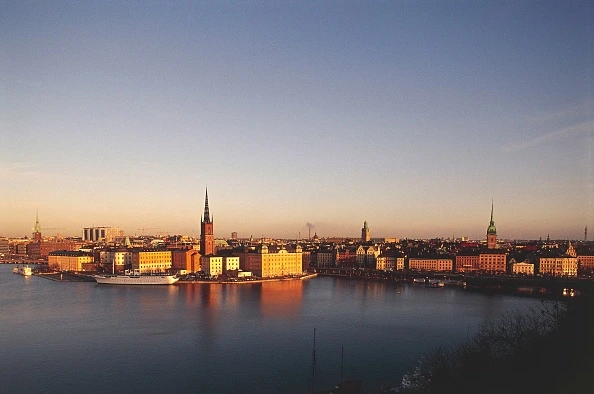
Stockholm is the greenest city in the world, with Scandinavia dominating the leaderboard, new research finds.
New analysis by Corporate Knights, shared in detail with City Monitor, investigates the emissions, air quality, waste and policies of 70 global cities, to find its sustainability ranking.

Green cities: which have the highest and lowest emissions?
Stockholm has the world’s lowest Scope 1 greenhouse gas emissions (meaning emissions from sources that an organisation owns or controls directly) per capita, with just 0.4 tonnes (t) CO2e emitted per person annually. The average high-income country’s per capita emissions are almost six times as high. Stockholm is joined by Scandinavian peer Copenhagen at the top of the list, the only other Western city in the top ten.
The rest of the top ten is primarily made up of African cities such as Abidjan in Cote d’Ivoire and Yaounde, Cameroon, as well as Taichung and Taipei in Taiwan and Medellín in Colombia, all with very low emissions attributed to the city government.
When it comes to measuring all consumption-based greenhouse gas emissions, however, Stockholm is far more similar to other European cities like Paris and London, as well as developed cities in Central and South America like Buenos Aires and Mexico City. Meanwhile, many African cities have consumption-based greenhouse gas emissions of less than 2t CO2e per capita.
Do cities prioritise cars over people and the climate?
The average city in a low-income country has air pollution levels of 27.8µg/m3 of PM 2.5 – fine particulate pollution produced by cars and industrial sources that can worsen respiratory diseases and in the long term is linked to increased mortality from heart and lung disease.
In comparison, cities in high-income countries tend to have lower air pollution averaging at 10.5µg/m3, in part due to the more modern and safe cars on the roads. But this is still more than double the WHO's air quality guidelines, which say that annual average concentrations of PM 2.5 should not exceed 5µg/m3, and 24-hour average exposures should not exceed 15µg/m3.
Dhaka, Bangladesh, and Lagos, Nigeria, are the cities with the highest levels of air pollution in the world, more than ten times the levels seen in Sydney, Australia, and Winnipeg, Canada, at the other end of the ranking.
A key measure to tackle air pollution in cities is by reducing the number of cars on the road.
Dubai has the highest level of vehicle dependency of any city in the world, with an average of 2.4 cars per household. The majority of cities in the top ten are in Canada and the US, where car ownership is far higher than the average for a city in a high-income country.
There is a clear correlation between car ownership and public transport usage. In Los Angeles, just 10% of journeys are taken with sustainable transport, which includes public transport as well as walking and cycling.
Whereas cities like Berlin, Karachi, Dhaka and Amsterdam, which are far more designed for sustainable travel, have far higher public transport usage, and therefore much lower levels of vehicle dependency.
Where in the world is most prepared for climate change?
What’s crucial is that cities are thinking proactively about the risk of climate change, and how they can be better prepared for risks like extreme temperatures and weather events, and rising sea levels. Cities also need to take a proactive role in tackling their emissions and climate impact not just for their own citizens, but also as part of the contribution to the global fight against climate change.
Unsurprisingly, Oslo and Stockholm are leading in climate readiness and enacting sustainable policies. Other major Western cities like London and Canberra, as some of the world’s biggest polluters, are also taking far overdue action. But it’s also cities like Quezon City in the Philippines, which did not cause climate change but have among the most to lose from its impacts, which are working harder than ever to save all our futures.
Explore the full ranking of the greenest cities in the world
[Read more: Seven ways to make leaders act on the climate]






